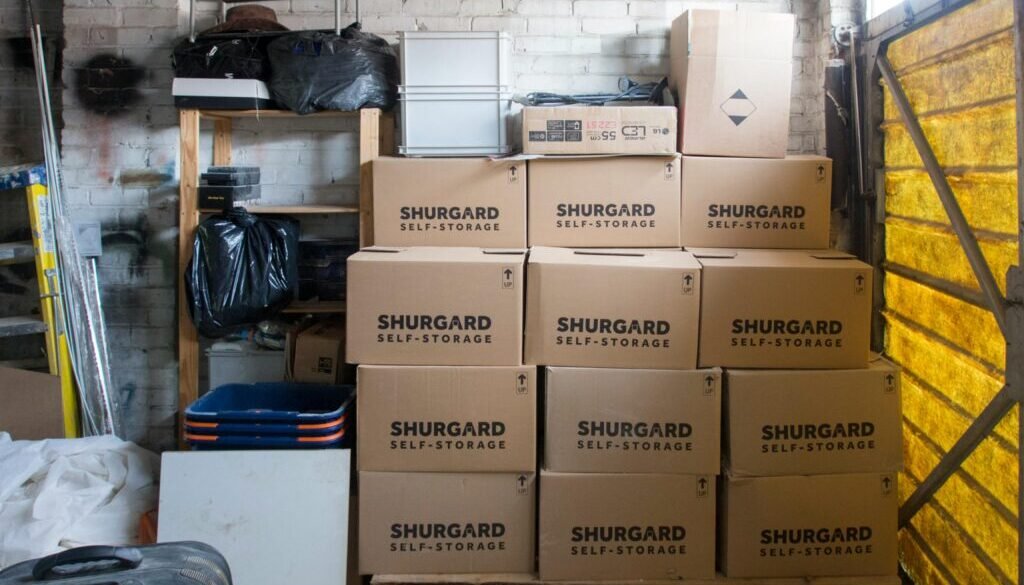Storage Solutions: What to Do When You Can’t Move Everything at Once
Moving can be an exciting yet overwhelming experience. Whether you’re relocating to a new home, downsizing, or simply need to store items temporarily, there are times when you can’t move everything at once. Perhaps the moving truck isn’t large enough, or you’ve yet to finalize the destination for all your belongings. In such cases, finding the right storage solutions is essential. Proper storage not only keeps your items safe and organized but also ensures a smoother transition to your new space. Here’s a comprehensive guide to help you navigate the process when you can’t move everything at once.
Why You Might Need Storage Solutions During a Move
There are several reasons why you may need storage solutions during a move:
- Logistical challenges: Sometimes, moving everything in one go is simply not feasible. Your moving truck might not be large enough, or the new space might not be ready to accommodate all your belongings.
- Timing issues: There may be a delay in closing on your new home or preparing your new place for moving in. In this case, you may need somewhere to store your things until you’re ready.
- Downsizing: If you’re moving to a smaller home, you might not have space for everything right away. Renting storage allows you to keep extra items safely stored until you decide whether to sell, donate, or eventually move them into your new place.
- Staging for a sale: If you’re selling your home, it’s common to declutter and store non-essential items to make the house more appealing to potential buyers.
Types of Storage Solutions
When it comes to moving and storing your items, there are several types of storage solutions to consider. Each has its pros and cons, depending on your needs.
1. Self-Storage Units
Self-storage units are a popular and flexible option for those who need to store their belongings temporarily. You rent a unit, and you have access to your items whenever you need them. Self-storage facilities come in a variety of sizes, so you can choose the one that best fits your needs.
- Pros: Easy access to your items, available 24/7, variety of sizes, and typically affordable.
- Cons: You have to transport your belongings to and from the storage facility, and there may be security concerns depending on the location.
2. Portable Storage Containers
Portable storage containers are another great option. These containers are delivered to your current location, and you can load them at your own pace. Once you’re done, the company will pick up the container and transport it to a secure storage facility.
- Pros: Convenient, you pack at your own pace, and the container is often delivered directly to your door.
- Cons: Can be more expensive than traditional self-storage units, and you may have limited access to your belongings once the container is picked up.
3. Warehouse Storage
For larger moves or high-value items, warehouse storage might be a more appropriate option. Many moving companies offer warehouse storage services, where your items are stored in large, secure facilities. These are often used for long-term storage.
- Pros: Highly secure, often climate-controlled, and well-suited for large or valuable items.
- Cons: Higher cost, and it may take longer to access your items.
4. Mobile Storage Units
Mobile storage units are similar to portable containers, but these units can often be transported easily and more quickly. They’re commonly used for short-term storage during a move or renovation.
- Pros: Convenient, easily accessible, and more flexible than traditional storage units.
- Cons: May not be suitable for very large moves and could have limited space.
5. Climate-Controlled Storage
If you’re storing sensitive items like electronics, artwork, or valuable documents, climate-controlled storage can protect them from extreme temperature fluctuations and humidity. These units are perfect for items that need to be kept in pristine condition.
- Pros: Protection from temperature and humidity extremes, perfect for delicate or valuable items.
- Cons: Typically more expensive than standard storage options.
Steps to Take When You Can’t Move Everything at Once
Once you’ve determined the right type of storage for your needs, follow these steps to ensure your move and storage process goes as smoothly as possible.
1. Assess Your Storage Needs
Take a good look at the items you need to store and assess their size, value, and the time they will need to be in storage. For example, seasonal items such as winter coats or holiday decorations can go into long-term storage, while everyday items might need to be accessed frequently, requiring a more convenient storage solution.
2. Choose the Right Size Storage Unit
One of the most important steps in choosing the right storage solution is selecting the right size. Moving companies and storage facilities often offer a variety of unit sizes. Be sure to select one that fits your belongings without too much unused space, as this can increase your costs. On the flip side, you don’t want a unit that’s too small either. If you’re unsure about the size, many storage companies provide online calculators or a team member can assist you.
3. Pack Smartly
Packing your items in a way that maximizes space is essential for storage. Use sturdy boxes, packing tape, and bubble wrap for delicate items. Be sure to label each box clearly, so you can easily identify what’s inside. Store heavier items at the bottom and lighter ones on top to prevent damage. If you’re using a portable storage container, make sure your items are secured tightly to prevent shifting during transportation.
4. Consider Temporary Solutions for Essentials
While your belongings are in storage, you’ll need to access some items regularly. Create a separate pile for essentials that you will need in the short term, such as toiletries, clothes, and important documents. Make sure these are easy to access, and perhaps even store them in a bag or box that’s easily retrieved.
5. Insurance and Security
When storing your items, ensure that they are adequately insured. Many storage facilities offer insurance for your belongings, but if you’re using a self-storage or portable unit, check to see if your homeowner’s or renter’s insurance policy covers stored items. Security is another important consideration—choose a facility with good lighting, gated access, and a high level of surveillance to protect your things.
When You Can’t Move Everything: Make the Most of It
While storing your belongings temporarily may seem like an inconvenience, it can also offer you flexibility and ease during your move. It allows you to take your time settling into your new home without the added pressure of having to move everything at once. Moreover, if you’re unsure about certain items, storage gives you the opportunity to decide whether to keep, donate, or discard them later.
As you consider the various storage solutions available, remember that the key is to assess your needs, plan ahead, and choose a solution that works best for you and your budget. And always ensure that your belongings are packed securely and insured for peace of mind.
With the right storage solution, you can turn the challenge of not moving everything at once into an opportunity for a stress-free, organized move!







